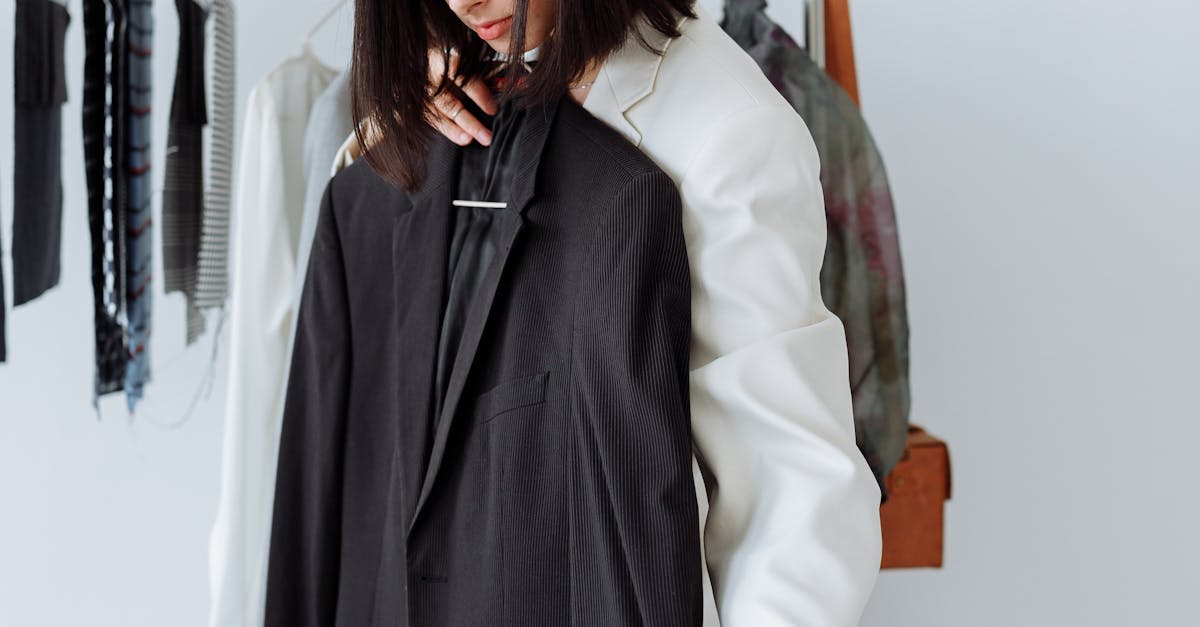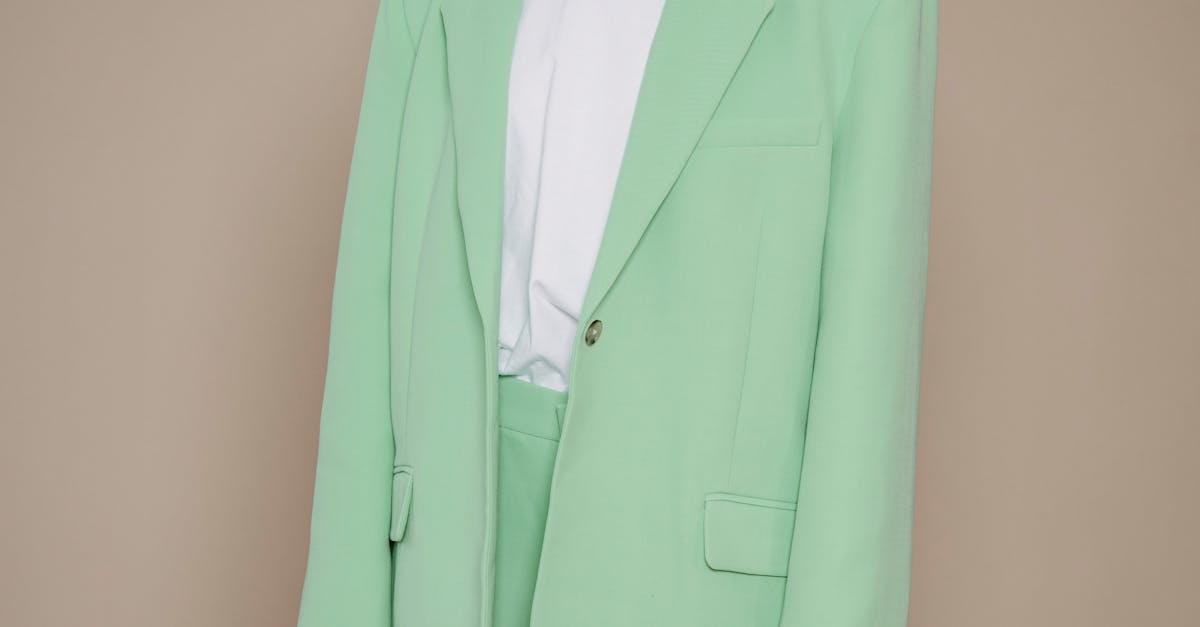
Table Of Contents
Protecting Against Moisture
Fitted wardrobes can be susceptible to moisture, which may lead to mould growth or damage over time. To protect your wardrobes, ensure that the surrounding environment is well-ventilated. Use dehumidifiers or air purifiers in areas with high humidity levels, particularly in bathrooms or kitchens. Regularly check for any leaks or signs of dampness in walls and ceilings, as these can affect the condition of your wardrobes.
In addition to improving air circulation, it is essential to use moisture-resistant materials when installing fitted wardrobes. This can include selecting laminated surfaces or specially treated woods that are less prone to water absorption. Implementing a routine cleaning schedule helps to remove dust and humidity, further safeguarding the integrity of your fitted wardrobes. Avoid placing damp items within them, and whenever possible, allow them to air out thoroughly before storage.
Best Practices for Humidity Control
Maintaining optimal humidity levels is essential for the longevity of fitted wardrobes. Excess moisture can lead to the growth of mould and mildew, which can compromise the integrity of the materials used in your wardrobes. To combat this, consider investing in a dehumidifier if you live in a particularly humid area. Regularly checking for leaks or water damage also plays a crucial role in maintaining a dry environment. Keeping windows open for ventilation during drier months can help as well, allowing air to circulate and moisture to escape.
Using moisture-absorbing products can further help in humidity control. Silica gel packets or desiccant bags can easily be placed within the fitted wardrobes to absorb excess moisture. It’s also beneficial to store clothing and linens in breathable fabric bags rather than plastic, as this allows airflow while reducing the risk of dampness. Additionally, regularly inspecting the conditions inside the wardrobes will ensure any issues are addressed promptly, preventing long-term damage.
Avoiding Overloading
Fitted wardrobes offer a clever solution for maximising storage while enhancing the aesthetic appeal of your space. However, overloading these wardrobes can lead to various issues. Excess weight may cause doors to misalign or even damage hinges. It's crucial to understand the limitations of your fitted wardrobe to ensure its longevity and functionality.
To maintain order and prevent overloading, consider implementing effective organisation methods. Group items by weight and size, placing heavier items on lower shelves and lighter items above. Regularly assess the contents of your fitted wardrobes to avoid unnecessary clutter. This approach not only extends the life of your wardrobe but also makes it easier to locate and access your belongings efficiently.
Weight Limits and Organisation Methods
Maintaining the structural integrity of fitted wardrobes requires mindful consideration of weight limits. Each wardrobe design comes with specifications regarding the maximum load that can be safely supported. It is essential to adhere to these guidelines to prevent damage to shelves and hanging rods. Overloading can lead to warped surfaces, sagging shelves, or even complete failure of the wardrobe system, necessitating costly repairs or replacements.
Effective organisation within fitted wardrobes plays a crucial role in enhancing their functionality and longevity. Utilising baskets, dividers, and shoe racks can aid in optimising space while preventing overcrowding. When items are well-organised, it reduces the risk of items toppling over and encourages a more efficient use of the wardrobe. Additionally, periodic re-evaluation of your belongings helps in keeping the organisation method dynamic, ensuring that your fitted wardrobes remain both practical and aesthetically pleasing.
Caring for Different Materials
Fitted wardrobes often come in a variety of materials, each requiring specific care techniques to maintain their appearance and functionality. Wooden wardrobes need careful attention to avoid scratches and dents. Regular dusting with a soft cloth helps prevent a build-up of particles that can cause damage. It’s also important to use wood-specific cleaners that nourish the surface without leaving a residue. For added protection, consider applying a suitable polish every few months.
Melamine surfaces provide a durable option for fitted wardrobes, but they can suffer from stains if not cleaned promptly. Using a damp cloth with a mild detergent is typically sufficient for keeping these surfaces fresh and clean. Glass components, often found in fitted wardrobes, require a different approach. Glass cleaner is best for removing fingerprints and smudges, ensuring a streak-free shine. Regular maintenance not only enhances the aesthetic appeal but also prolongs the life of your fitted wardrobes, making them a worthwhile investment.
Specific Tips for Wood, Melamine, and Glass
Wooden fitted wardrobes require regular maintenance to ensure their longevity. Dust should be wiped away with a soft cloth to prevent scratches. It's important to avoid using harsh chemicals that could damage the finish. Instead, opt for a mild soap solution for cleaning surfaces. Additionally, applying a natural wood conditioner every few months can help preserve the wood's integrity and maintain its luster.
Melamine fitted wardrobes are generally low maintenance but benefit from periodic cleaning. A damp cloth can easily remove dust and stains, while avoiding abrasive materials is crucial to prevent scratching. For glass components, a glass cleaner will provide a streak-free shine. Ensure that any cleaning products used are safe for the specific materials incorporated in your fitted wardrobes, as compatibility is key to preserving their appearance and functionality.
FAQS
How can I protect my fitted wardrobe from moisture damage?
To protect your fitted wardrobe from moisture damage, ensure proper ventilation in the room. Use dehumidifiers if needed, and avoid placing wet or damp items directly inside the wardrobe. Regularly check for any signs of mould or mildew and address them immediately.
What are the best practices for controlling humidity in my fitted wardrobe?
Best practices for controlling humidity include keeping the wardrobe door slightly ajar when not in use, using silica gel packets to absorb excess moisture, and maintaining a consistent room temperature. Regularly monitor humidity levels with a hygrometer.
How can I avoid overloading my fitted wardrobe?
To avoid overloading your fitted wardrobe, assess the weight limits of the shelves and hanging rods. Organise items by category and frequency of use, and avoid cramming too many items into a single space. Regularly declutter to ensure you’re not keeping unnecessary items.
What weight limits should I consider for my fitted wardrobe?
Weight limits can vary based on the materials used in your fitted wardrobe. Typically, shelves can hold between 20 to 30 kg, while hanging rods can support around 15 kg. Check with the manufacturer for specific weight limits.
How do I care for different materials in my fitted wardrobe?
For wood, use a soft cloth and a suitable wood cleaner; avoid excess water. For melamine, a damp cloth with mild detergent works well. For glass, use a glass cleaner or a vinegar solution to keep it streak-free. Always refer to the care instructions specific to your wardrobe materials.
